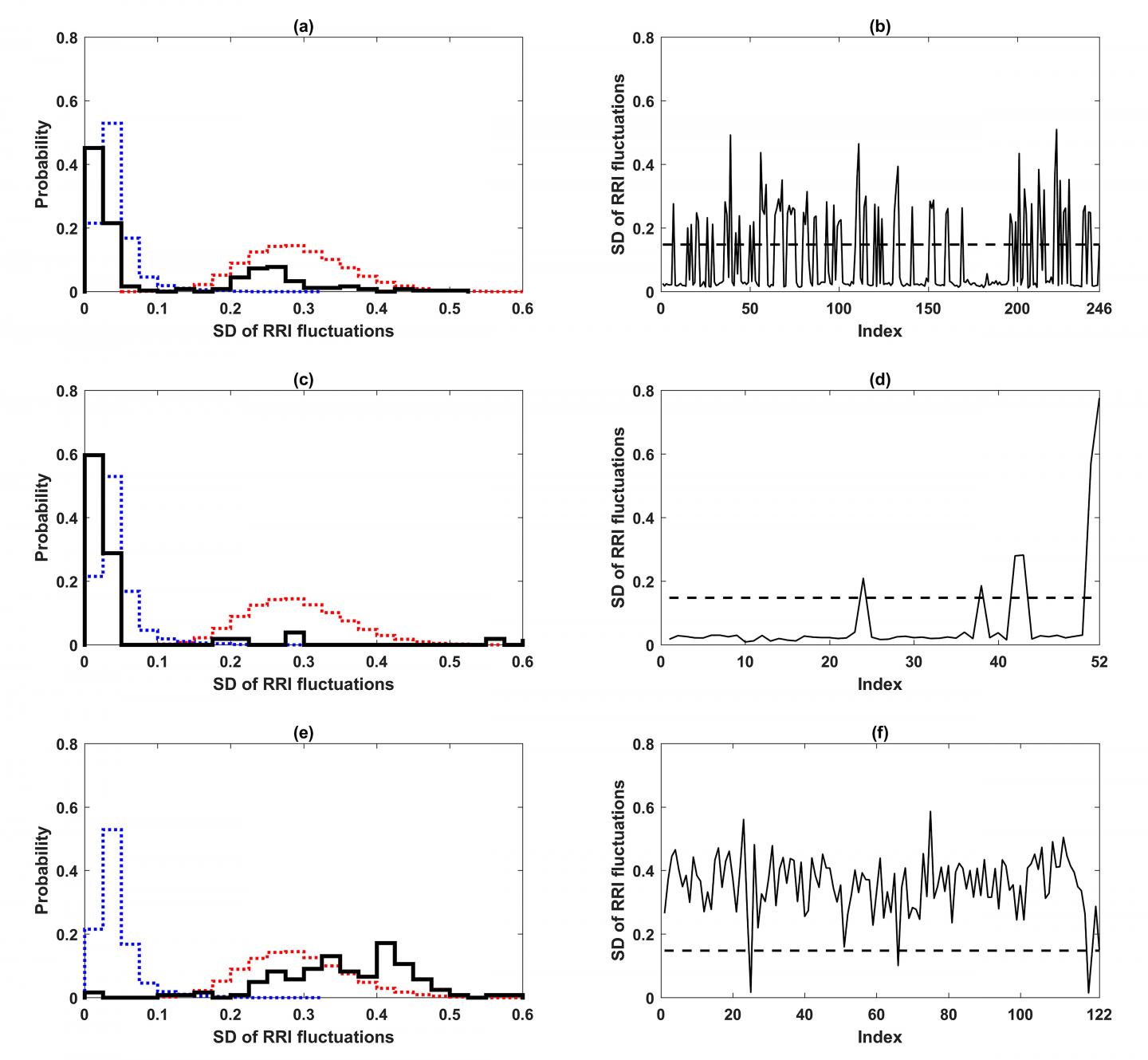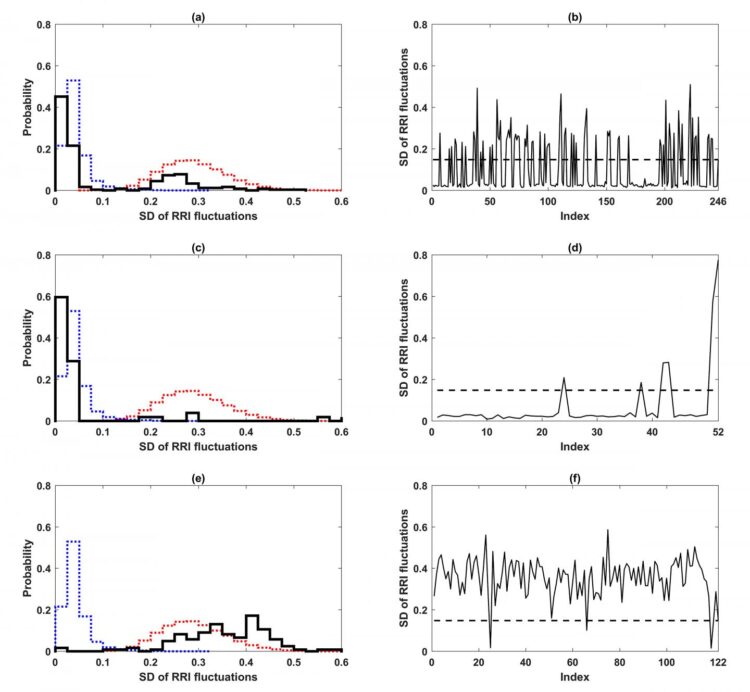Newly proposed way to define cardiac state looks to provide a warning sign of the disease, with implications for wearable devices

Credit: Yew Wai Liew
WASHINGTON, May 26, 2020 — Affecting up to 4% of patients older than 65 years, atrial fibrillation ranks among the most common heart conditions. Described by health professionals as an “irregularly irregular” heart rhythm, episodes of atrial fibrillation continue to prove difficult to predict.
An international team of researchers, led by Boon Leong Lan, at Monash University Malaysia, has proposed a way to define cardiac state and has studied the dynamics of the state before the cardiac rhythm changes from normal sinus to AF rhythm and vice versa. The work, appearing in Chaos, by AIP Publishing, and based on critical transition theory, looks to provide an early warning for those with paroxysmal atrial fibrillation with potential implications for future wearable devices.
The paper points a path forward for better screening for paroxysmal atrial fibrillation and may lead to more successful interventions when an atrial fibrillation episode has started.
“The flickering of the cardiac state could provide an early warning for the onset of paroxysmal atrial fibrillation for patients who are wearing a device that can measure the heartbeats accurately to monitor their cardiac state,” said Lan. “This early warning would be useful if there is a medicine that the patient could take to prevent the onset.”
It is not obvious how the cardiac state should be defined using just the electrocardiogram time series data. Lan said that their definition of the cardiac state, which is based on the changes between successive beat-to-beat intervals, was inspired by his previous work. He and his collaborator previously discovered that the distribution of the beat-interval changes can discriminate subjects with sustained atrial fibrillation from healthy ones very well.
Their new approach shows the cardiac state flickers back and forth between near normal and near atrial fibrillation states, resulting in a bimodal distribution of states before atrial fibrillation starts or terminates.
Others have proposed that dynamical transitions in a host of different realms from climate to stock markets to medicine are preceded by critical slowing down as the tipping point is reached. In critical slowing down, the rate of recovery from even a small perturbation approaches zero.
Lan and colleagues found that critical slowing down did not precede the onset of atrial fibrillation.
Lan is optimistic their method of defining the state of a complex system can be adapted to study critical transition in other chronic episodic diseases, such as epileptic seizure, asthma and ulcers, and other complex systems like an electrical power system or climate system.
He and his group are currently studying the changes in the brain state before epileptic seizures using their approach.
###
The article, “Flickering of cardiac state before the onset and termination of atrial fibrillation,” is authored by Boon Leong Lan, Yew Wai Liew, Mikito Toda and Suraya Hani Kamsani. The article will appear in Chaos on May 26, 2020 (DOI: 10. 1063/1.5130524). After that date, it can be accessed at https:/
ABOUT THE JOURNAL
Chaos is devoted to increasing the understanding of nonlinear phenomena in all areas of science and engineering and describing their manifestations in a manner comprehensible to researchers from a broad spectrum of disciplines. See https:/
Media Contact
Larry Frum
[email protected]
Related Journal Article
http://dx.





